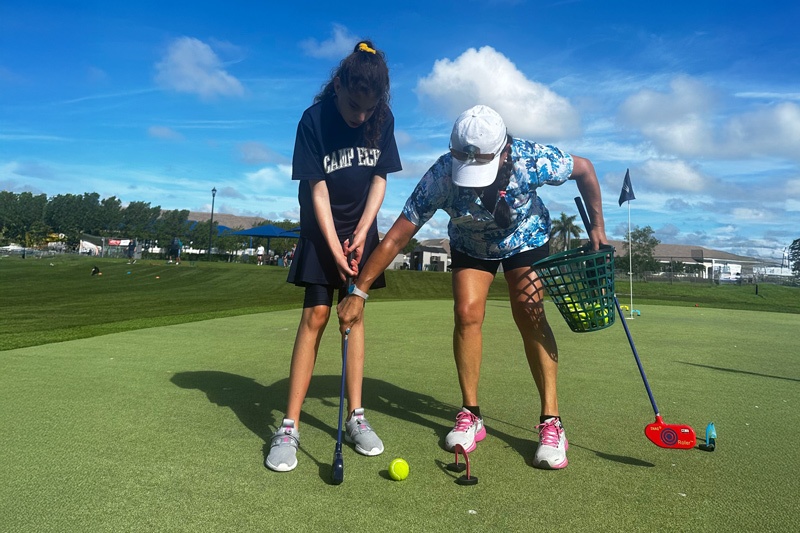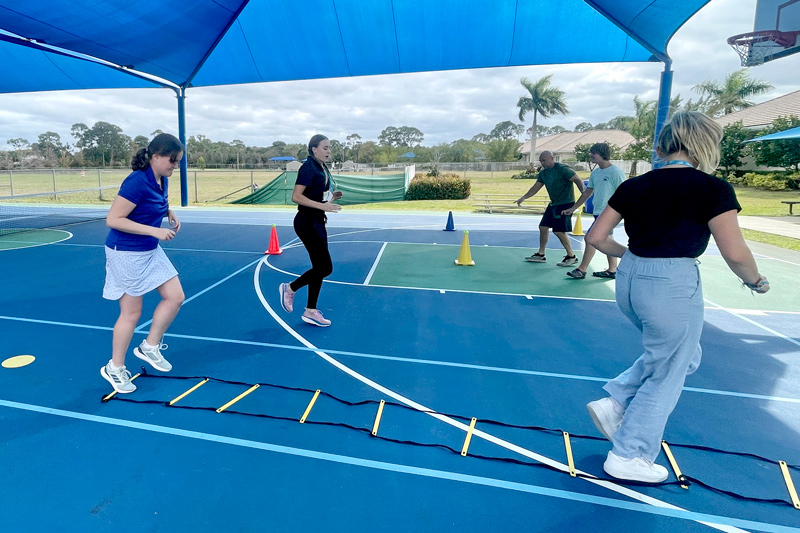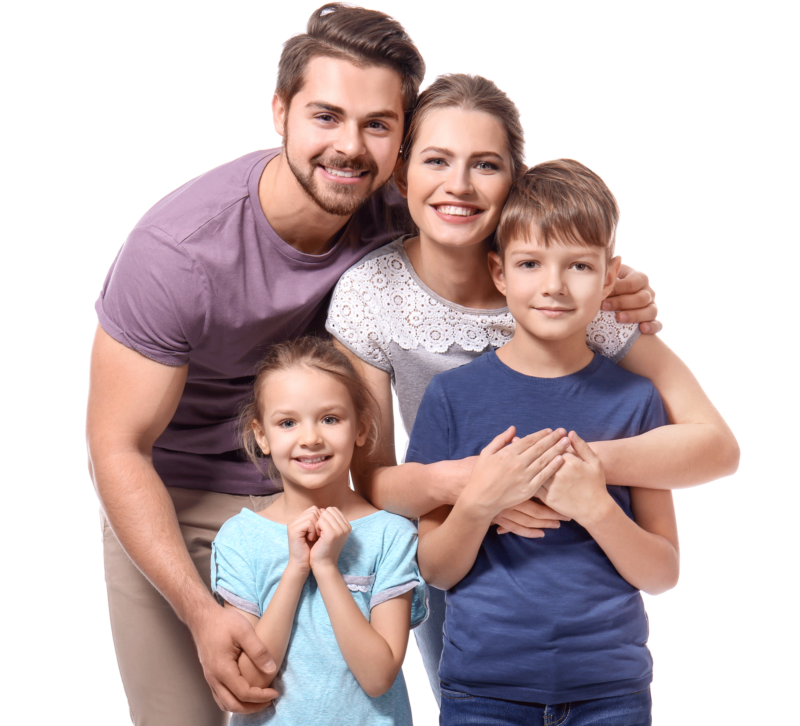Key Points:
- Individuals with autism have traditionally tended to live more sedentary lifestyles, which contributes to increased risk for both physical and mental health conditions.
- To reverse this trend, a variety of physical activity and sport-based training programs are now being offered at autism therapeutic centers, and so far, these programs have yielded positive effects on health outcomes as well as motor, social, and communication abilities.
- The key to promoting increased physical activity and fitness in individuals with autism will be offering a wide array of different training options, such as running, golf, tennis, swimming, and soccer.

A participant of The Ernie Els #GameON Autism Golf program working on their swing with a coach.
On average, individuals with autism spectrum disorder (ASD) tend to live more sedentary lifestyles compared to the general population (Nichols et al., 2019). This finding has been associated with an increased risk for chronic health concerns as well as difficulties with fine and gross motor functioning (Corvey et al., 2016). Additionally, individuals with autism who report lower levels of physical activity also typically experience higher levels of anxiety and depression (Croen et al., 2015). As a result of these findings, a greater emphasis is being placed on promoting fitness and sports participation within the autism community.
So far, investigations on the use of physical activity or sport-based programs have yielded positive findings on a variety of motor abilities and health outcomes (Healy et al., 2018). The benefits also extend to social and communication functioning, especially when the programs integrate opportunities for socialization with peers, coaches, and volunteers.
Notably, individuals with autism absorb benefits from these programs regardless of the type of exercise or sport that is being taught (Shahane et al., 2024; Hynes & Block, 2023; Shanok et al., 2024). Positive results have emerged from programs involving aerobic training (running, swimming, biking), strength training, as well as a variety of sports (basketball, soccer, golf, and tennis). It is important to provide numerous fitness opportunities and options to individuals with autism so they can find the exercises or activities that they enjoy the most. For some, this may be lifting weights, while others may be especially drawn to racket sports or kickball. At any rate, the goal should be to find the fitness activity that these individuals will be most likely to practice on a consistent basis. It is important to note that one of the well-documented barriers to fitness participation in this population has been the lack of available options (Hillier et al., 2020).

A coach providing fitness instruction as part of The Ernie Els #GameON Autism Fitness program.
In addition to the research I have conducted, I have also had the privilege of providing tennis training to children, adolescents, and adults with autism with the Els for Autism® team at The Els for Excellence Center®. Aside from getting a quality workout and improving their physical health, students also experience tremendous joy when they are able to improve their skills and engage in a long rally with their peers or the coach. Many of these individuals become very passionate about the sport and ask their parents to play tennis with them during the weekends. It is evident that fitness and sport-based training programs for individuals with autism cultivate valuable social bonding experiences. The following psychological benefits also commonly occur (Cuesta-Gómez et al., 2022):
- Individuals feel a sense of autonomy as well as improved confidence as they begin to practice the activities more and make meaningful improvements.
- Physical activity has been shown to provide a helpful boost in terms of mood, cognitive performance, and neurological functioning.
- Having a valuable leisure activity often provides people with a greater sense of meaning and purpose in life.
Although fitness and physical activity participation have traditionally been challenging for individuals with autism, I am optimistic that this pattern can be reversed in the future. Engaging in regular exercise has been associated with a myriad of positive outcomes in the general population. I would argue that physical activity is an even more vital lifestyle practice for individuals with autism, given that concerns with anxiety, inattention, and low confidence are more common in this demographic (Cuesta-Gómez et al., 2022).
The key to promoting increased fitness levels will be providing plenty of opportunities to individuals with autism of all ages. This can include a variety of sports as well as aerobic and anaerobic exercises. For this reason, the Ernie Els #GameON Autism Sports Program from Els for Autism® offers a wide variety of different physical activity training classes centered around golf, tennis, fitness, and aquatics. My hope is that more and more autism therapeutic centers will adopt physical activity and sport-based programs for their clients. These are wonderful services to provide for individuals with autism of all ages, and they can also complement other therapeutic approaches.
Nate Shanok, PhD, is a Professor in Behavioral Sciences and Neuroscience at Florida Atlantic University’s Charles E. Schmidt College of Science. He can be reached via email at nshanok@fau.edu, and more information is available on his website at nateshanok.com.
Additional information on the Els for Autism Foundation can be found here: elsforautism.org.
References
Corvey, K., Menear, K. S., Preskitt, J., Goldfarb, S., & Menachemi, N. (2016). Obesity, physical activity and sedentary behaviors in children with an autism spectrum disorder. Maternal and Child Health Journal, 20, 466-476.
Croen, L. A., Zerbo, O., Qian, Y., Massolo, M. L., Rich, S., Sidney, S., & Kripke, C. (2015). The health status of adults on the autism spectrum. Autism, 19(7), 814-823.
Cuesta-Gómez, J. L., Vidriales-Fernández, R., & Ortega-Camarero, M. T. (2022). The quality of life of people with ASD through physical activity and sports. Heliyon, 8(3).
Healy, S., Nacario, A., Braithwaite, R. E., & Hopper, C. (2018). The effect of physical activity interventions on youth with autism spectrum disorder: A meta‐analysis. Autism Research, 11(6), 818-833
Hillier, A., Buckingham, A., & Schena, D. (2020). Physical activity among adults with autism: participation, attitudes, and barriers. Perceptual and Motor Skills, 127(5), 874-890.
Hynes, J., & Block, M. (2023). Effects of physical activity on social, behavioral, and cognitive skills in children and young adults with autism spectrum disorder: A systematic review of the literature. Review Journal of Autism and Developmental Disorders, 10(4), 749-770.
Nichols, C., Block, M. E., Bishop, J. C., & McIntire, B. (2019). Physical activity in young adults with autism spectrum disorder: Parental perceptions of barriers and facilitators. Autism, 23(6), 1398-1407.
Shahane, V., Kilyk, A., & Srinivasan, S. M. (2024). Effects of physical activity and exercise-based interventions in young adults with autism spectrum disorder: A systematic review. Autism, 28(2), 276-300.
Shanok, N. A., Randles, E., Honsberger, C., Brooker Lozott, E., & Sotelo, M. (2024). Golf training as an effective therapeutic tool for autism spectrum disorder: a multisite evaluation. International Journal of Developmental Disabilities, 1-14.






